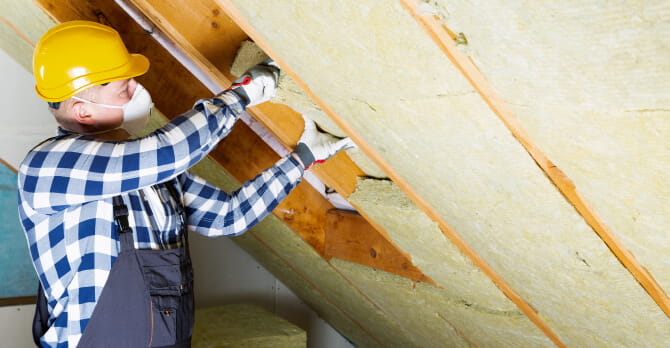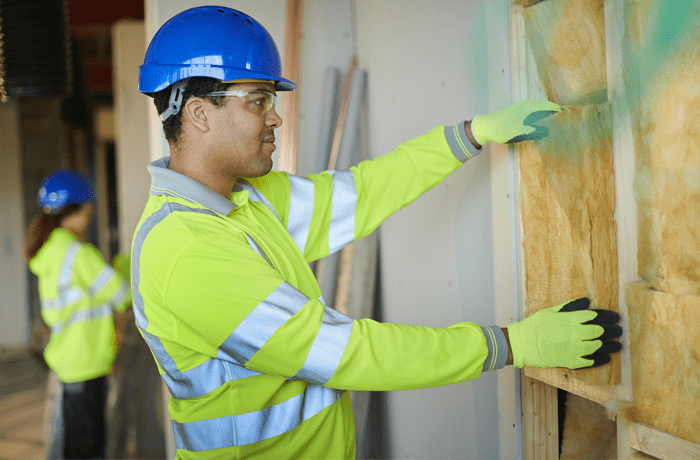Keep heat in and drafts out
Insulation acts as a barrier to help keep warm air where you want it: it’s a material used to fill the spaces behind walls and above ceilings, in hard-to-reach places and even small gaps and crevices. Because heat flows naturally from warmer areas to cooler ones, insulation slows heat flow by reflection and/or absorption, which in turn increases energy efficiency and improves comfort levels.
In winter, heat moves directly from warm spaces to unheated spaces and outdoors. During summer months, heat moves from the warm outdoors to the cooler interior of your building. Adding insulation helps stop this heat transfer.
Why upgrade?
-
Reduce heating and cooling use.
-
Improve occupant comfort.
-
Save on ongoing energy costs.
-
Lower noise levels.
-
Reduce wear and tear on HVAC or boiler system.













